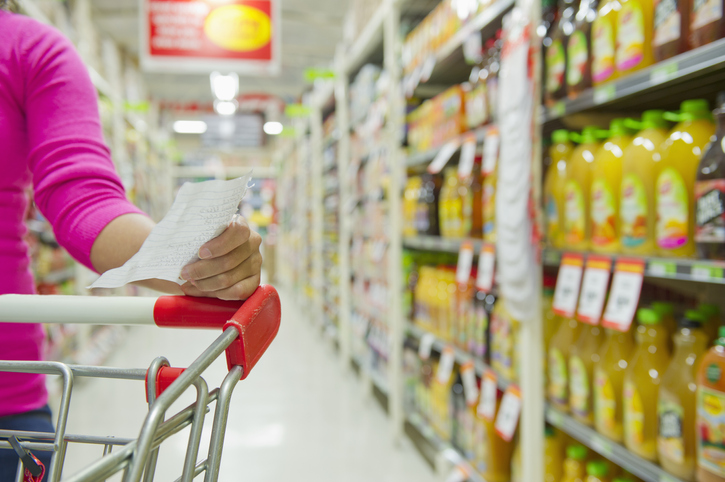The sticky economic factor making an interest rate drop unlikely this year
It’s a key indicator in the RBA board’s decision making process, but it is proving difficult to move in the right direction
The consumer price index (CPI) rose in April to an annual rate of 3.6 percent, which was 0.1 percent higher than in March, raising doubts about an interest rate cut this year as inflation starts looking stickier than expected. This is the second consecutive month of small rises, potentially indicating that Australia is experiencing the same stalled progress in bringing inflation down that is being seen in the United States, as both nations approach their central banks’ target inflation bands.
In Australia, the target inflation band is 2 to 3 percent, with the Reserve Bank of Australia (RBA) aiming to achieve the midpoint under its new agreement with the Federal Government following a formal review. In its interest rate decision-making, the RBA does not give as much weight to the monthly inflation data because not all prices are measured like they are in the quarterly data. On a quarterly basis, inflation has continued to fall. In the March quarter, the annual rate of inflation was 3.6 percent, down from 4.1 percent in December, according to the Australian Bureau of Statistics (ABS).
CBA economist Stephen Wu noted the April data was above the bank’s forecast of 3.5 percent as well as the industrywide consensus forecast of 3.4 percent. He predicts the next leg down in inflation won’t be until the September quarter, when we will see the effects of electricity rebates and a likely smaller minimum wage increase to be announced by the Fair Work Commission next month compared to June 2023.
The most significant contributor to the April inflation rise were housing costs, which rose 4.9 percent on an annual basis. This reflects a continuing rise in weekly rents amid near-record low vacancy rates across the country, as well as significantly higher labour and materials costs which builders are passing on to the buyers of new homes, as well as renovators.
The second biggest contributor was food and non-alcoholic beverages, up 3.8 percent annually, reflecting higher prices for fruit and vegetables in April. The ABS said unfavourable weather led to a reduced supply of berries, bananas and vegetables such as broccoli. The annual rate of inflation for alcohol and tobacco rose by 6.5 percent, and transport rose by 4.2 percent due to higher fuel prices.
Robert Carnell, the Asia Pacific head of research at ING, said they no longer expect a rate cut this year after seeing the April data. Mr Carnell said an increase in trend inflation was apparent and “rate cuts this year look unlikely”. In the RBA’s latest monetary policy statement, published before the April CPI was released, it said: “Inflation is expected to be higher in the near term than previously thought due to the stronger labour market and higher petrol prices. But inflation is still expected to return to the target range in the second half of 2025 and to reach the midpoint in 2026.”
This stylish family home combines a classic palette and finishes with a flexible floorplan
Just 55 minutes from Sydney, make this your creative getaway located in the majestic Hawkesbury region.
Continued stagflation and cost of living pressures are causing couples to think twice about starting a family, new data has revealed, with long term impacts expected
Australia is in the midst of a ‘baby recession’ with preliminary estimates showing the number of births in 2023 fell by more than four percent to the lowest level since 2006, according to KPMG. The consultancy firm says this reflects the impact of cost-of-living pressures on the feasibility of younger Australians starting a family.
KPMG estimates that 289,100 babies were born in 2023. This compares to 300,684 babies in 2022 and 309,996 in 2021, according to the Australian Bureau of Statistics (ABS). KPMG urban economist Terry Rawnsley said weak economic growth often leads to a reduced number of births. In 2023, ABS data shows gross domestic product (GDP) fell to 1.5 percent. Despite the population growing by 2.5 percent in 2023, GDP on a per capita basis went into negative territory, down one percent over the 12 months.
“Birth rates provide insight into long-term population growth as well as the current confidence of Australian families,” said Mr Rawnsley. “We haven’t seen such a sharp drop in births in Australia since the period of economic stagflation in the 1970s, which coincided with the initial widespread adoption of the contraceptive pill.”
Mr Rawnsley said many Australian couples delayed starting a family while the pandemic played out in 2020. The number of births fell from 305,832 in 2019 to 294,369 in 2020. Then in 2021, strong employment and vast amounts of stimulus money, along with high household savings due to lockdowns, gave couples better financial means to have a baby. This led to a rebound in births.
However, the re-opening of the global economy in 2022 led to soaring inflation. By the start of 2023, the Australian consumer price index (CPI) had risen to its highest level since 1990 at 7.8 percent per annum. By that stage, the Reserve Bank had already commenced an aggressive rate-hiking strategy to fight inflation and had raised the cash rate every month between May and December 2022.
Five more rate hikes during 2023 put further pressure on couples with mortgages and put the brakes on family formation. “This combination of the pandemic and rapid economic changes explains the spike and subsequent sharp decline in birth rates we have observed over the past four years,” Mr Rawnsley said.
The impact of high costs of living on couples’ decision to have a baby is highlighted in births data for the capital cities. KPMG estimates there were 60,860 births in Sydney in 2023, down 8.6 percent from 2019. There were 56,270 births in Melbourne, down 7.3 percent. In Perth, there were 25,020 births, down 6 percent, while in Brisbane there were 30,250 births, down 4.3 percent. Canberra was the only capital city where there was no fall in the number of births in 2023 compared to 2019.
“CPI growth in Canberra has been slightly subdued compared to that in other major cities, and the economic outlook has remained strong,” Mr Rawnsley said. “This means families have not been hurting as much as those in other capital cities, and in turn, we’ve seen a stabilisation of births in the ACT.”
This stylish family home combines a classic palette and finishes with a flexible floorplan
Just 55 minutes from Sydney, make this your creative getaway located in the majestic Hawkesbury region.


















